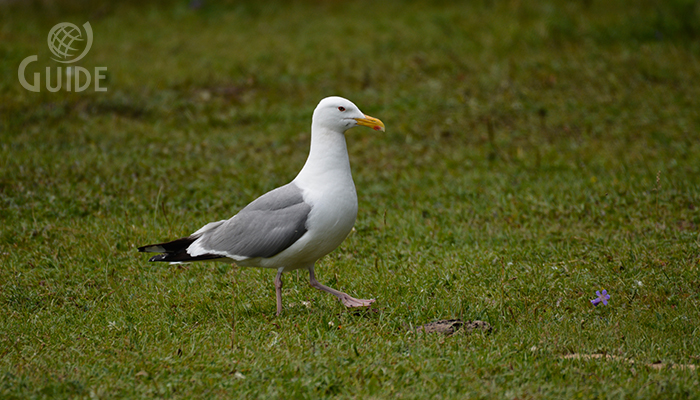
English: Mongolian Gull
Russian: Хохотунья
Mongolian: Үхэр цахлай
German: Mongolische Weisskopfmowe
French: Goeland pontique de Mongolie
Body length:
54-60 cm.
Wing span:
123-148 cm.
A widespread and
common species of N Europe. Frequently abundant on and near coasts, but seen
inland, too, feeding on fields, rubbish dumps, etc. Roosts on harbour piers or
secluded islands; flights to these at height, often in formation. Frequently
soars high up in high-pressure weather, often in large parties. Nests, mainly
colonially but at times in single pairs, on coasted islands, cliffs or at
lakes. Omnivorous, taking fish, crustaceans, earthworms, offal and roadkill,
eggs and young of other birds, etc.
Identification:
Four age-groups. Told from all other common gulls by large size and pale grey
upperparts (cf. smaller Common Gull),
but see very similar Yellow-legged and Caspian Gulls for differences from
these. Important to note shape also; compared to both Yellow-legged and
Caspian, Herring has not quite as long and pointed wings, easiest to see on a
standing bird which shows only moderate primary projection and a rather compact
and ‘bulky’ look. Plumage development and ageing can be worked out from the
plate, but keep in mind the individual variation. Thus, grey on upperparts
develops only from 2nd winter onwards, so ‘all-brown’ 1 years are more
difficult to tell from Lesser and Great Black-backed Gulls. Head of adult white
in summer, boldly streaked grey-brown in autumn. Bill colour develops from dark
with variable pale base on juvenile/1st winter to yellow with orange-red spot
on adult; iris from dark brown of juvenile to pale yellow (with yellow or
orange-red orbital ring) of adult, eye looking invariably pale at a distance.
Legs pink at all ages (but see below).
- Variation: Birds of W Europe and Iceland
are relatively small and round-headed, have back pale grey and wing-tip with
relatively much black and more limited white. Breeds in Scandinavia and around
the around the Baltic, wintering partly in W Europe, average larger, slightly
darker grey on back, extremes having little black and much white on wing-tip;
birds of E Baltic and N Fenno-Scandia like argentatus, but locally some or most
have legs yellowish or yellow. Inviting confusion with Yellow-legged or Caspian
Gulls. Still, ‘omissus’ usually told by typical compact ‘Herring Gull shape’,
pale eye, extensive white tips to exposed primaries, and in autumn-early winter
densely streaked hood.